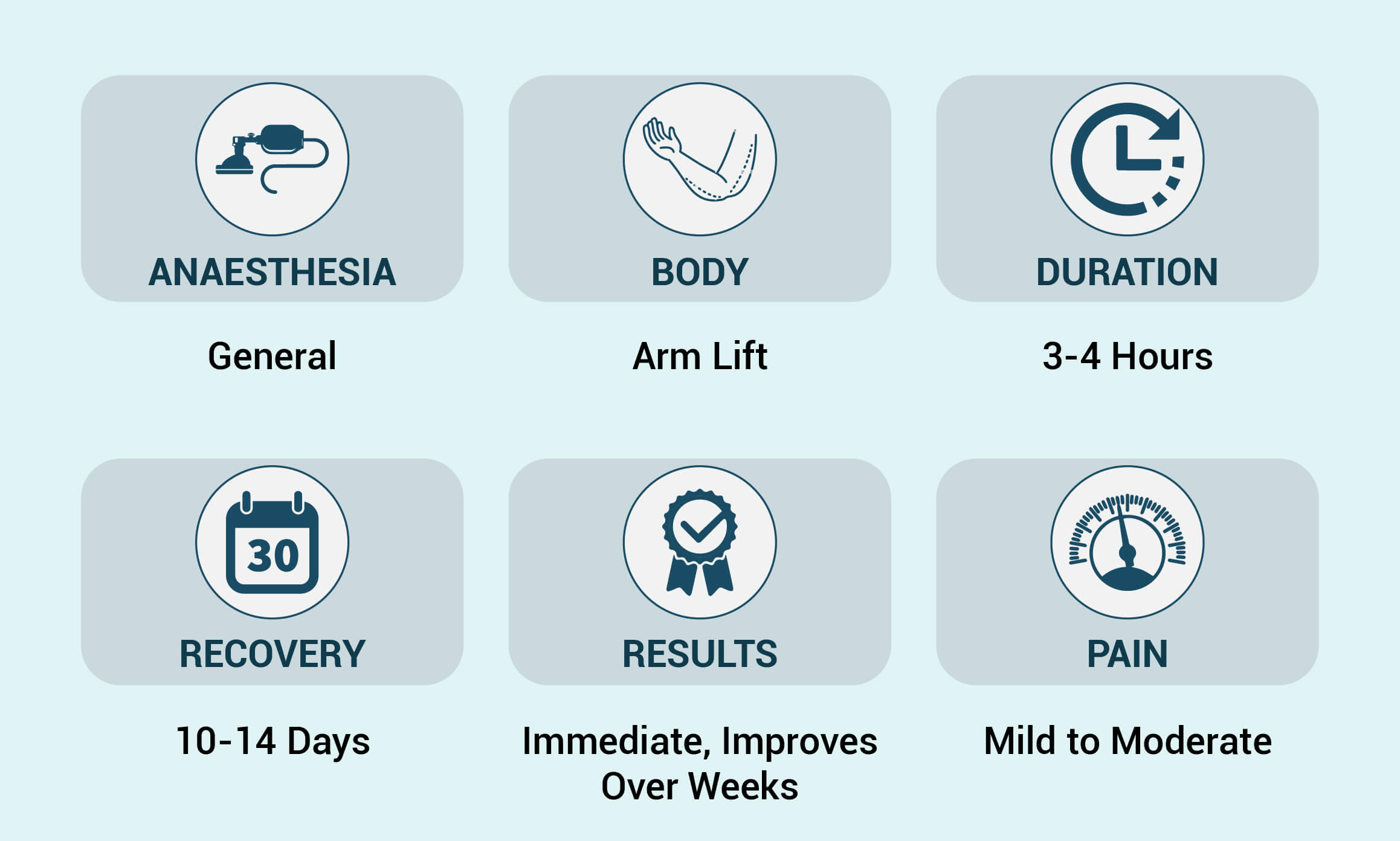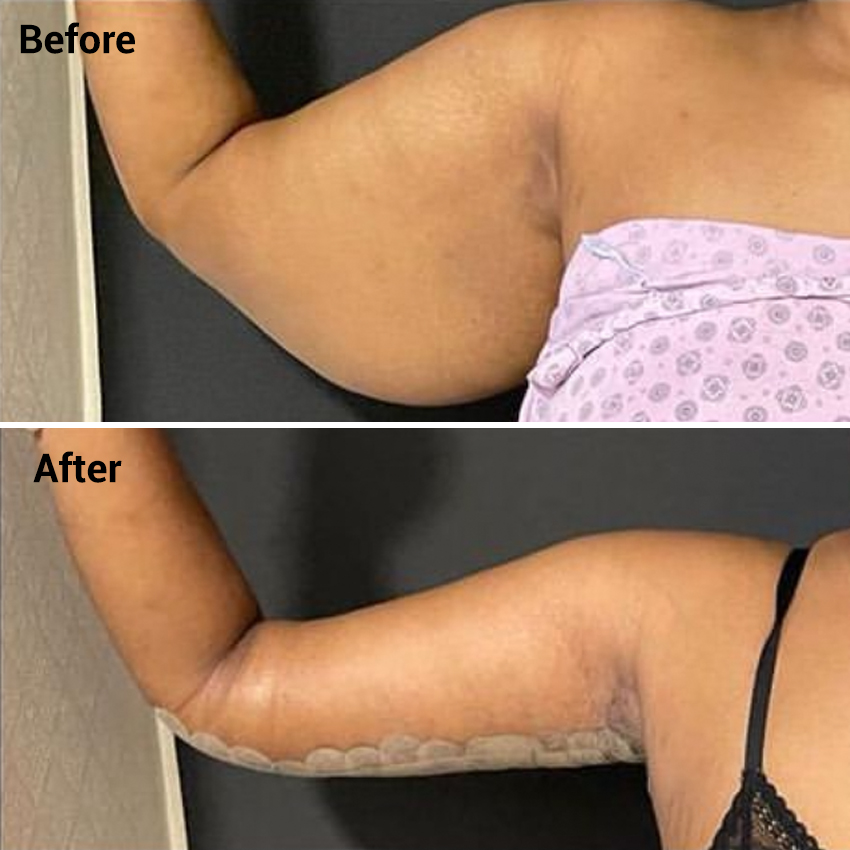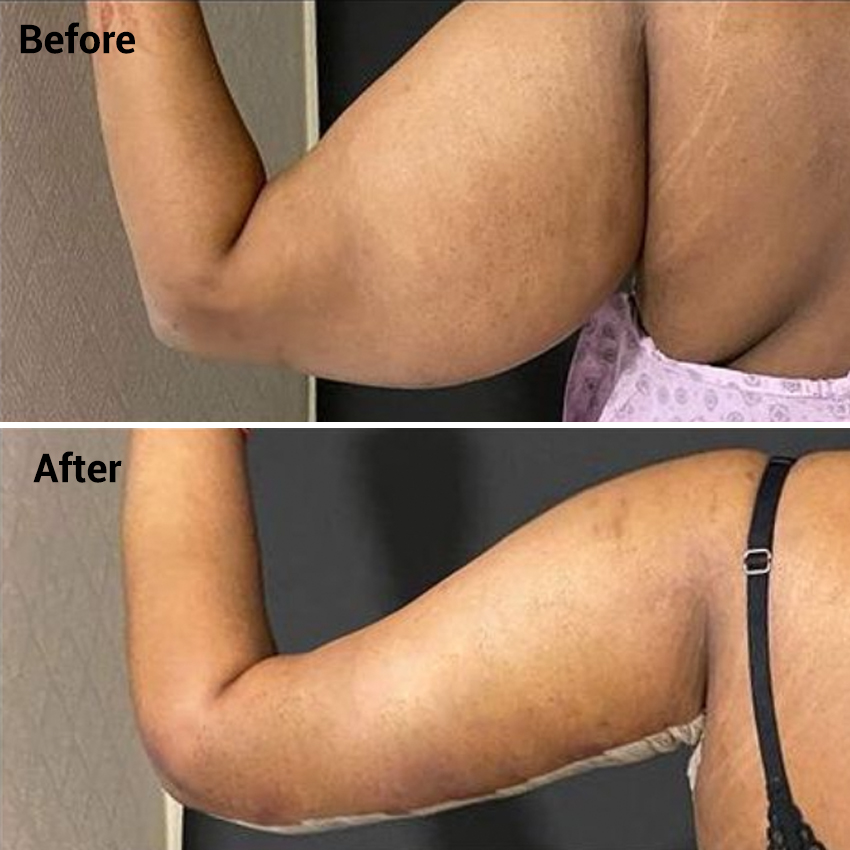Brachioplasty - Arm Lift Surgery in Mumbai
Do you want to remove extra fat from your arm? Then Arm Lift Surgery in Mumbai is the transformative solution for you. Achieve the arm appearance you've always dreamed of – take the first step towards a more confident you by scheduling your consultation today with us.



What is Arm Lift Surgery?
An arm lift surgery, also known as brachioplasty, is a cosmetic surgery that helps with sagging underarms. It involves removing extra skin, tightening and smoothing tissue, and getting rid of excess fat. This procedure can give your upper arms a more toned and defined appearance.
Sagging skin can result from aging or genetics, and it may also occur after losing a lot of weight. If you're thinking about getting an arm lift, there are a few factors to keep in mind.
Types of arm lift procedures,
Types of arm lift procedures, known as Brachioplasty, include:
Traditional or standard brachioplasty :Common procedure with an incision from the armpit to the elbow, removing excess skin and fat and tightening the remaining skin for contouring.
Mini Brachioplasty:Suitable for mild to moderate skin laxity, it involves a shorter incision in the armpit area, resulting in a smaller scar.
Extended Brachioplasty:Addresses significant excess skin and fat extending to the chest or back, with a longer incision allowing for extensive tissue removal and upper body recontouring.
Liposuction-assisted Brachioplasty:Combines liposuction with Brachioplasty to remove localized fat deposits, enhancing the contour. Liposuction is performed before excess skin removal.
Minimal incision or scarless Brachioplasty:Utilizes advanced technologies like radiofrequency or laser energy to tighten skin and reduce fat in the upper arms, minimizing scarring. It may involve small incisions or a non-surgical approach.
Precautions Before Arm Lift:
1.Consult a qualified plastic surgeon specializing in arm lifts. Discuss your goals, medical history, and expectations.
2.Undergo a thorough medical evaluation to assess your health and eligibility for surgery.
3.Quit smoking and inform your surgeon about any medications, supplements, or herbal remedies you're taking.
4.Maintain a stable weight before considering an arm lift.
5.Follow your surgeon's pre-operative instructions, including fasting and medication guidelines.
6.Arrange for post-operative care and assistance during the initial recovery period.
7.Educate yourself about the arm lift procedure, its techniques, expected results, and potential risks.
Remember, consult a qualified plastic surgeon for personalized advice based on your circumstances.
The Arm Lift Surgery procedure
Anesthesia:You're given either local or general anesthesia, depending on your doctor's surgical method.
Incision placement:On the day of your surgery, your doctor starts marking your arm where they plan to make incisions. There are several ways to perform an arm lift, but the most common ones involve incisions on the inside or back of your arms. Other options include an armpit incision or one that extends from the top of your elbow to your armpit.
Removal of excess skin and fat: The surgeon will remove excess skin and fat from the upper arm through incisions. If extra pockets of fat make it hard for your arm to heal fully, your doctor may use liposuction to remove that fat.
Tissue tightening: Guided by the marks they made on your arm, your doctor goes in and tightens or reshapes the tissue in your upper arm. They then pull your skin back over the tissue and close the surgical wound with stitches. The entire procedure is usually done within three hours.
After surgery, you'll need someone to drive you home from the appointment and stay with you overnight to ensure you have no problems.
Arm Lift Risks
Like all surgeries, an arm lift comes with some risks. In addition to pain and infection, you might also have:
1.Excessive bleeding
2.Permanent scarring
3.Fluid buildup
4.Nerve, muscle, or blood vessel damage
5.Fatty tissue death
Recovering from an Arm Lift Surgery
1.To control swelling during recovery, you may need to wear a compression garment.
2.A temporary drainage tube may be inserted in your arm to drain any fluid or blood after surgery.
3.Your doctor will provide post-operative care instructions for you to follow at home.
4.The instructions will cover wound care, medications, and follow-up appointments.
5.Avoid smoking during the recovery period to promote healing and minimize complications.
6.You should be able to return to work or school and resume some activities within two weeks.
7.Within six weeks, you should be able to resume normal activity.
8.If you experience any pain or difficulty moving after the initial recovery period, notify your doctor.
How do you sleep after an arm lift?
After arm lift surgery, patients' ideal sleeping position is comfortably reclined on their backs. It's important to avoid sleeping on the stomach or sides. Patients should keep their arms elevated during the initial two weeks while they sleep.
Placing a few pillows under the arms, with elbows slightly bent, helps promote proper fluid drainage and reduces inflammation. This simple practice contributes to smoother recovery and enhances overall comfort.
Benefits of Arm Lift Surgery or Brachioplasty
The arm lift procedure, or brachioplasty, offers several benefits for individuals bothered by loose or sagging skin in their upper arms. Some of the key benefits include:
Improved arm contour:An arm lift can effectively remove excess skin and fat from the upper arms, resulting in a more toned and defined arm contour.
Increased self-confidence:For individuals who are self-conscious about the appearance of their upper arms, an arm lift can help boost self-confidence and body image.
Elimination of "bat wings":Loose and sagging skin in the upper arms can sometimes create the appearance of "bat wings" when the arms are raised. An arm lift can eliminate this excess skin, allowing individuals to confidently lift their arms without feeling self-conscious.
Enhanced physical comfort:Loose and sagging arm skin can sometimes cause discomfort, such as chafing or irritation. By removing the excess skin, an arm lift can alleviate these physical discomforts and improve overall comfort.
Long-lasting results::While the natural aging process continues, the results of an arm lift are generally long-lasting.
Who is a good candidate for an Arm Lift Surgery?
A good candidate for an arm lift, or brachioplasty, typically exhibits certain characteristics and meets specific criteria. The following factors generally indicate a good candidate for an arm lift:
Age:The Candidate age must be above 18 Excess skin and/or fat in the upper arms: Candidates should have loose, sagging, or excess skin in the upper arms that cannot be adequately improved through non-surgical methods such as exercise or weight loss.
Stable weight:It is generally recommended that candidates have achieved a stable weight and are close to their ideal weight before considering an arm lift.
Good overall health:Candidates should be in generally good health, without any medical conditions that could impair healing or increase the risks associated with surgery.
Non-smoker:Smoking can interfere with the healing process and increase the risks of complications during and after surgery.
 WhatsApp
WhatsApp